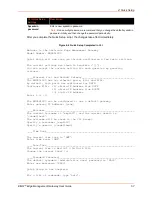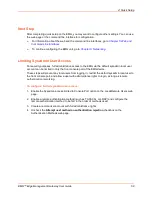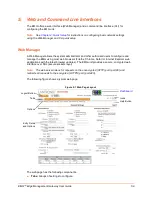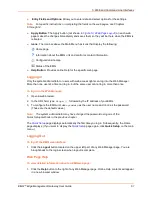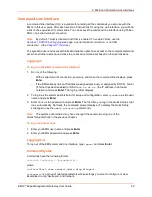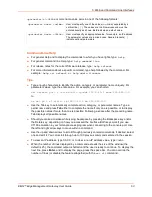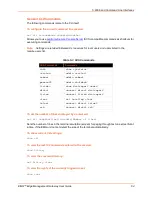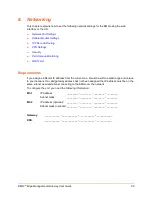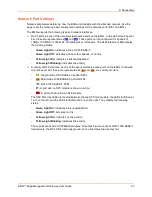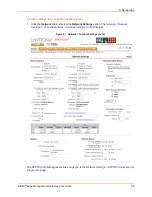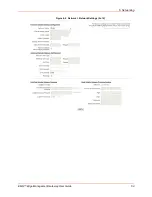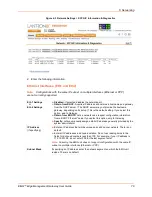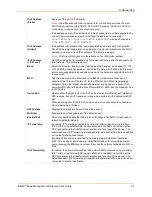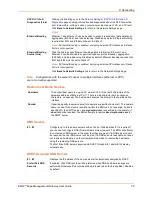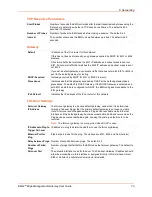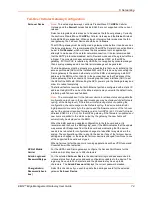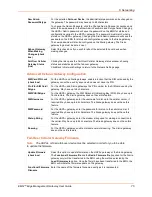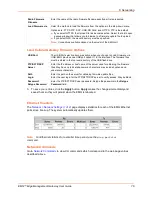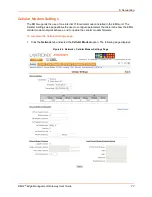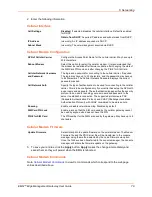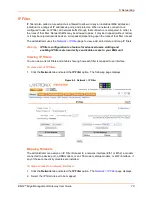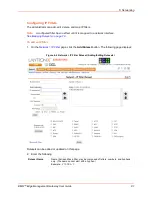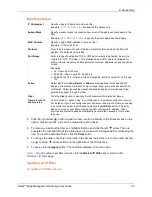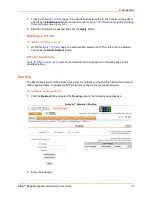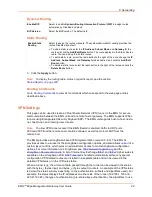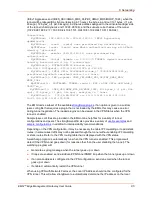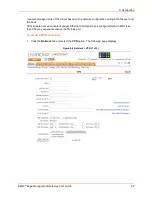
6: Networking
EMG™ Edge Management Gateway User Guide
71
IPv6 Address
(Static)
Address of the port in IPv6 format.
Note:
The EMG supports IPv6 connections for the following services: the web,
SSH, Telnet, remote syslog, SNMP, NTP, LDAP, Kerberos, RADIUS, ,
connections to device ports, and diagnostic ping.
IPv6 addresses are written as 8 sets of 4-digit hexadecimal numbers separated by
colons. There are several rules for modifying the address. For example:
1234:0BCD:1D67:0000:0000:8375:BADD:0057
may be shortened to
1234:BCD:1D67::8375:BADD:57.
IPv6 Address
(Global)
IPv6 address with global scope that is generated by address auto configuration.
The address is generated from a combination of router advertisements and MAC
address to create a unique IPv6 address. This field is read only.
Note:
This field will not appear in the absence of an IPv6 global address.
IPv6 Address
(Link Local)
An IPv6 address that is intended only for communications within the segment of a
local network. This field is read only.
Mode
Select the direction, duplex mode (full duplex or half-duplex), and speed (10, 100,
or 1000 Mbit) of data transmission. The default is Auto, which allows the Ethernet
port to auto-negotiate the speed and duplex with the hardware endpoint to which it
is connected.
MTU
Specifies the maximum transmission unit (
MTU
) or maximum packet size of
packets at the IP layer (OSI layer 3) for the Ethernet port. When fragmenting a
datagram, this is the largest number of bytes that can be used in a packet. The
minimum MTU size is 108 bytes (to conform with RFC 2460) and the maximum size
is 1500 bytes.
Active Port
Selects either the RJ45 port or the SFP port as the active Ethernet port. Selecting
SFP requires that a SFP transceiver module be inserted into the appropriate SFP
slot.
When switching from RJ45 to SFP or vice versa, any active network connections
may be disrupted or broken.
HW Address
Displays the hardware address of the Ethernet port.
Multicast
Displays the multicast address of the Ethernet port.
Enable IPv6
Select this box to enable the IPv6 protocol. If changed, the EMG unit will need to
reboot. Enabled by default.
IP Forwarding
If enabled, IP forwarding enables IPv4 network traffic received on one interface
(Eth1, Eth2, or an external/USB modem attached to the EMG unit with an active
PPP connection) to be transferred out another interface (any of the above). The
default behavior (if IP forwarding is disabled) is for network traffic to be received but
not routed to another destination.
Enabling IP forwarding is required if you enable Network Address Translation
(NAT) for any device port modem or USB/ISDN modem. IP forwarding allows a
user accessing the EMG over a modem to access the network connected to Eth1 or
Eth2.
IPv6 Forwarding
If enabled, IPv6 forwarding enables IPv6 network traffic received on one interface
(Eth1, Eth2, or an external/USB modem attached to the EMG unit with an active
PPP connection) to be transferred out another interface (any of the above). The
default behavior (if IP forwarding is disabled) is for network traffic to be received but
not routed to another destination.

